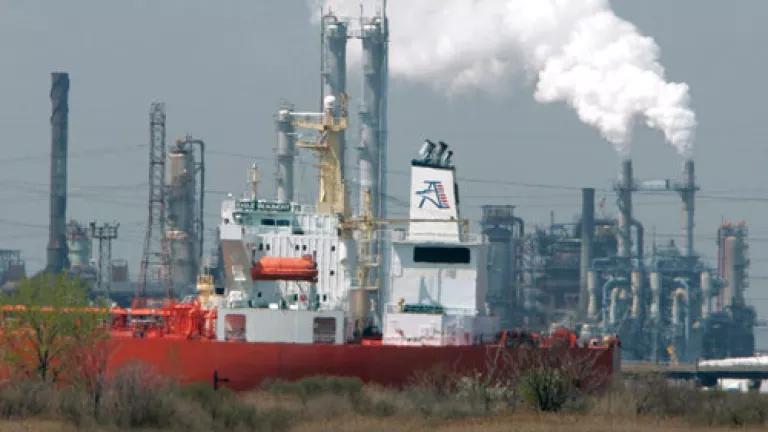
Lifting the long-standing ban of crude oil exports will expand the industrial oil patch in America's backyard, bringing with it a host of impacts to our waters, communities, ranches and farms, as international markets incentivize producers to expand fracking and send more mile long oil trains through our towns and cities. The national debate over lifting the crude oil export ban is a damaging distraction from the urgent challenge of reducing our nation's carbon emissions and transitioning to a clean energy economy. The oil lobby and its Congressional allies argue that allowing U.S. producers to export oil internationally will increase industry profits and further expand domestic oil production.
Moreover, policies intended to spur increased crude oil production are entirely inconsistent with the urgent need to address climate change. As the international community prepares to meet in Paris later this year to discuss efforts to address climate change, it is critical that the United States pursues energy policies that align with its goal to transition away from high carbon fuels and limit global warming to 2 degrees Celsius. That means focusing on efforts to expand clean energy and reduce oil demand. Measures intended to expand oil production - such as lifting the oil export ban - do not fit on that agenda.
The debate surrounding lifting the oil export ban is occurring against the backdrop of successful efforts in the United States to reduce oil consumption. According to the Center for Economic and Policy Research (CEPR), U.S. oil consumption has declined by two million barrels per day in absolute terms over the last ten years and demand is 6.4 million bpd lower than the Energy Information Agency projected it would be in 2003. In the face of successful efforts to reduce domestic consumption, the oil industry hopes to ship its product to international markets - a move that is likely to fuel both additional global demand and increased carbon emissions.
Both opponents and supporters of the oil export ban argue that lifting it would increase oil production, with some estimates suggesting that lifting the ban would spur as much as 1.2 million barrels per day of additional production by 2025. That production, expected to come from fracked "light tight oil" reserves throughout the United States, would only increase the threat to the water, air and communities across more than thirty states on the frontline of this destructive industrial practice. It would also increase the volumes moving by train, adding to the risks faced by millions of Americans living in the blast zone of major oil by rail corridors.
That production isn't necessary in a world that is serious about avoiding the worst impacts of climate change. The Intergovernmental Panel on Climate Change (IPCC) has been clear that limiting global warming to 2 degrees Celsius will require keeping over three-quarters of the world's proven fossil fuels in the ground (IPCC, pg. 151). Meanwhile, the International Energy Agency (IEA) forecasts that reaching a 2 degree Celsius scenario will require a substantial reduction in global oil consumption in the next twenty years.[1] Simply stated, efforts to leverage increased global oil production are inconsistent with the international community's commitment to limit warming to 2 degrees Celsius. And as the U.S. prepares to take a leadership role in Paris, it should not pursue policies that are likely to undermine the efforts of the international community to reduce it dependence on fossil fuels.
The United States needs to focus on efforts to incentivize the transition to clean energy, both at home and abroad. One of the first steps to aid that transition is to eliminate incentives to expand the development and consumption of high carbon fuels. In that context, efforts to lift the crude oil ban are misplaced and will take us in the wrong direction. Rather than focusing our national attention on policies intended to expand fossil fuel development and its many impacts on our communities, lands, water, and climate, our policy makers should turn toward the urgent task of providing consumers with cleaner, more sustainable alternatives to build prosperous, sustainable economies around the world.

